A SENSE OF PLACE: Palmietpan – A Changing Landscape
Every landscape tells its own story; every
landscape discloses an ancient history of how it came to be. A history of
deposition and erosion, formation and shaping, degradation and re-moulding. A
story of the geological processes and the weather that carved and shaped it. The
story tells too of recent modifications to those parts of the landscape that
are less resistant, more accepting of alteration; at the same time, other parts
of the landscape display an unyielding antagonism to change. Whether a
landscape’s story is gentle or more violent depends entirely on the specific landscape
that is being observed and of its own unique geology and the much more recent
history of its occupation (or not) by human beings.
Is there a single word that expresses “a
feeling of place, a sense of place”? The word ‘landscape’ seems wholly
inadequate and very restrictive too. In some sense, a landscape describes the
lie of the land, the topography of a place. Once captured in an image, a
photograph, a sketch or a painting, a landscape acts as a portrait of an area.
Like portraits of living beings, the ‘landscape’ we peruse also hints at the character,
the unique qualities of a select portion of scenery that enticed the visual
artist to record it. At the same time, the ‘landscape’, the portrait of a place,
also reveals the personality and sentiment of the visual artist herself; it
reveals the emotional response by the artist to a specific location.
Ever since the start of our relationship, I
have been accompanying my wife, Jacqui, on three or four annual trips to an old
family farm in the western Free State Province of South Africa. In this part of
the interior of the country, the topsoil is sparse and the ground beneath is
gravelly at best, if not outright rocky. Unlike the vast, sandy,
maize-producing plains to the north-east and east, this part of the Free State
is sheep and cattle country. Here the horizon is flat and very distant, broken
only by an occasional low ridge or kopje. The sky always dominates the
landscape beneath it. On a clear winter’s day, the flat land is overarched by an
immensity of deep-blue air; when moisture fills the air during the summer
months and thunderstorms construct themselves, the land lies still and silent,
as though cowed by the towering cloudscapes above it.
Along the southern boundary of the family farm
lies a sizeable pan – a completely level expanse of salt-encrusted, dark-grey
clay. Along its perimeter grow sedges – sometimes (falsely) referred to as palmiet in old Afrikaans. From these two
features the farm derives its name: Palmietpan.
In the seventeen years that I have been visiting the family farm, I have never
seen the pan filled with water.
On our most recent trip at the end of July
2020, as we approached the farm during the late afternoon, the pan lay before
us, glistening. Black-winged Stilts, various species of ducks (including South
African Shelduck and Egyptian Geese), Kittlitz's
and Three-banded Plovers, and even a small
group of Lesser Flamingos were feeding in different locations and at different
depths of water along the shoreline of the pan.
The pan forms a dimple in the otherwise flat countryside
of this part of the Free State province. The rim of the pan rises in a very
gentle slope from the floor of the pan to the height of the grasslands and
thorny scrublands some 100 to 150 metres higher up. Now, at the height of
winter, the slope all around the pan was covered in various tall, dry grasses
and low thorn scrub, with stunted Sweet Thorn (Acacia (Vachellia) karroo), Buffalo-Thorn Jujube (Ziziphus mucronata), honeythorns (Lycium spp.)
and Wild Asparagus (Asparagus laricinus)
predominating. On the farm property, on the north-eastern shoreline of the pan,
the rim incorporates a small, fairly narrow level step on which stand two
groves of very large, ancient Karee (Searsia
lancea) trees, now accompanied by scrubby Ziziphus mucronata bushes.
On this ‘platform’, in the immediate vicinity
of these old trees, particularly on sheets of rock exposed by rain and wind,
countless San stone artefacts lie scattered about fully exposed. Cutting
implements, scraping implements and the occasional arrow tip can be found here.
Close-by, a large area of ground is covered in chips and flakes of stone
knapped off fist-sized rocks unknown eternities ago.
This intriguing area has never been studied in
detail. Apart from identifying the stone tools as “of San origin”, linked with a comment of “we have sufficient examples of such stone tools”, those South
African universities that have been approached with a select sample of the
stone implements have not taken any further interest. Yet the landscape of Palmietpan seems to indicate a much more
fascinating tale.
I am not an archaeologist. Any thoughts I
express and any claims I may make in this short blog are not grounded in
factual evidence. Yet, Palmietpan conveys
a kind of ‘sense of place’; it hints at a significance to the San
hunter-gatherers in a bygone era. To me, at least, the size of the pan itself,
the sheer volume and variety of rock chips and stone tools found in this very small
area, and the location of the finds on the only level shelf overlooking the entire
pan seem notable. Together, they suggest a far greater import of this site to
the aboriginal inhabitants than a mere happenstance locality fit only
for short-lived occupation by a few bands of San at some unknown era in the
past.
The pan is large and, as this winter has
proved, it will hold water for months after the last rains have fallen at the
end of summer. Alone this possible source of water (albeit unpredictable and
seasonal) in a region that experiences long, dry winters would make Palmietpan an area of consequence. The
amount of stone chips and flakes that can be found here speak of a site at
which the working of stone and the crafting of stone tools took place over a
significantly long period of time – to leave such copious evidence behind, work
must have taken place here over at least several seasons. Add to this the
countless implements found here that were never finished and were simply thrown
aside. For a while at least, Palmietpan
must have formed part of a stone-crafting workspace. And then the ledge itself
adds a definite sense of significance. The view from this only piece of level
ground along the rim of the pan covers the entire perimeter of the pan and its
surrounding sparse, scrubby thorn-veld. Any animal, any human, moving about in
this flat land would have been noticed by a keen observer occupying the level
shelf.
For many days, I have searched the immediate
vicinity of the pan relentlessly for a possible source of the rock material
used in the knapping process to make these stone implements. A very thin layer
of dark-grey, clay-like rock is exposed near the platform with the tree groves.
This layer is overlain by several metres of gravel and soil. Yet the incessant
excavations of golden moles and the deep tunnel systems mined out of the hard,
overlying soil by ground squirrels do hint at a possible source, deep beneath
the topsoil, of rock similar to that used long ago by the San for the manufacture
of the stone tools.
At Palmietpan,
the landscape is being churned over by these fossorial and burrow-excavating
small mammals. Chunks of calcrete and other rock material, not found at the
surface, are heaved out of their tunnels by the ground squirrel families. The mounds
of the golden moles are littered with stone fragments of precisely the type of
rock worked by the San long ago. Beneath the topsoil there must lie further
evidence of an occupation, albeit seasonal, of this landscape long ago by a
significant number of San artisans.
For its inhabitants, particularly so for human
beings, different landscapes hold different significances. More than that, the
same landscape acquires diverse meanings for different individuals too.
Different individuals will each react in a singular and personal way to the
same landscape. (Each individual human probably can and does envisage or imagine
her or his beloved landscape. Often this landscape is part of a precious memory
from past travels; sometimes (I suspect in humans other than myself too), this
‘landscape’ is purely imaginary. Each of us probably conveys in the mind her or
his own idyllic landscape.)
A (particular) landscape is often idealised
when it is depicted or described. As humans, our penchant for romanticism often
imbues a landscape with meaning; it attributes to a landscape a personification
and a role that reflects our deepest hopes and desires. The significance of a
landscape to us as individuals, families, communities or even nations is often entwined
with personal or historical episodes that have shaped our lives: a locality, a
landscape, is intimately associated with spaces of personal crisis or of
battle, places of hardship or places of plenty, scenes of loss or of gain. We
look at landscapes through our own or collective spectacles. We depict our
chosen landscapes with these cultural stimuli in mind, so that our view of the
land is always emotionally charged and highly subjective. Moreover, for us, the
observers, the landscape itself takes on an individuality, a nature that,
together with our cultural or private accretions we append to a place, gives
rise to an endless and fascinating mythopoeia of landscape.
So too it is with Palmietpan: the water of the pan, its shorelines of mud and soil,
its gentle slopes of thorn-scrub and tall grasses, and its inhabitants over
many aeons of time. The landscape of Palmietpan
speaks of an oasis, a significant place in the otherwise water-scarce landscape
of the western Free State.
On one of the smaller expanses of exposed rock
on the shelf with the two groves of Karee lie the desiccated remains of a
long-dead Cattle Egret. This tableau of rock, bone and feathers serves as a
reminder to any conscious observer that possession of a landscape and its
occupation too are transient indeed. Landscapes seem much longer-lived, and
yet, like organisms, they change over time, they age and mature, not only in
their geological features, but also in their significances, in their meanings
to the current and past inhabitants of the landscapes, in their ‘sense of
place’.




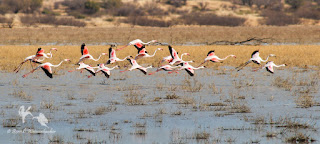

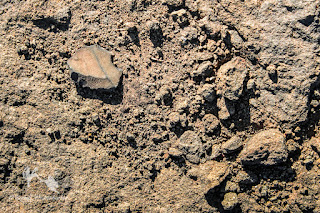
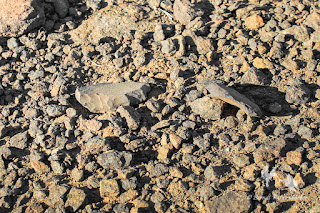
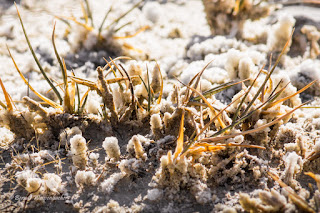
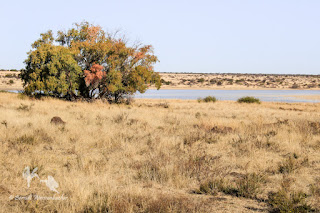

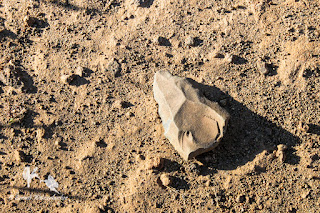

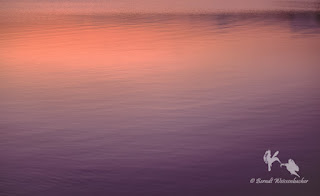

Except for the magnificent story I cannot believe how you captured the beautiful photos of the farm. They are stunning you really are an expert in photography
ReplyDeleteThank you, Jenny, for the kind words. Palmietpan has always been and remains a haven! Dankie aan julle almal op die plaas!
Delete